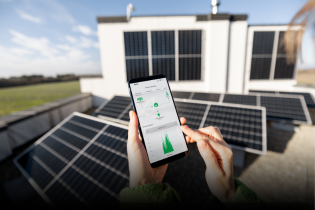The rise of Industry 4.0 has revolutionized numerous sectors, and the supply chain is no exception. Advanced technologies like IoT, AI, Big Data, and others are empowering businesses to streamline operations, strengthen decision-making, and mitigate risks in real-time. The use of IoT in supply chain management has significantly reduced, if not eliminated, many traditional complexities related to logistics, vendor management, and inventory control.
This blog post explores how Industry 4.0 leverages IoT to simplify supply chain complexities and examines the potential future impacts of this transformative technology.
The Intricacies of Modern Supply Chains
In today’s expanding market, the influx of new players has created a highly complex supply chain ecosystem. This ecosystem involves numerous stakeholders, including raw material suppliers, manufacturers, distributors, and retailers, all interconnected across different sectors. This interconnectedness can lead to challenges like shipment delays, process inefficiencies, and unpredictable demand fluctuations.

A Statista report highlights that 34% of businesses globally cite supply chain disruptions as their primary concern when meeting customer demands. Managing these complexities is crucial, not just for operational efficiency but also for customer satisfaction, as consumers increasingly expect rapid deliveries and seamless experiences. This is where Industry 4.0 and the Internet of Things (IoT) step in.
The Role of IoT in Industry 4.0
“Industry 4.0” signifies the fourth industrial revolution, characterized by intelligent automation and data sharing within manufacturing. The IoT platform is at the heart of this transformation, acting as a bridge between the physical world and smart digital systems. This platform facilitates seamless data exchange between devices, enabling analysis and optimization of supply chain processes for increased efficiency and cost reduction.
Simplifying Supply Chain Complexity with IoT
IoT devices collect real-time data from various touchpoints across the supply chain, providing businesses with enhanced transparency and control. Here are some key areas where IoT simplifies supply chain complexities:

1. Real-Time Tracking and Visibility
One of the most significant advantages of IoT in supply chain management is the ability to track and monitor goods and processes in real-time. Sensors attached to shipments provide up-to-the-minute information on location, temperature, humidity, and even vibration levels. This is particularly crucial for businesses handling temperature-sensitive products like pharmaceuticals and food, enabling proactive prevention of damage.
Cold chain management, a prime example of an IoT application, uses sensors to actively monitor and manage the temperature of perishable goods during transportation and storage, ensuring regulatory compliance. Automated alerts notify businesses of any temperature deviations, preventing spoilage.
McKinsey reports indicate that companies using AI for supply chain management have achieved a 15% improvement in logistics costs and a 65% boost in service levels. These advancements empower businesses to anticipate delays, reroute shipments, enhance customer satisfaction, and reduce costs.
2. Inventory Management and Optimization
IoT has also revolutionized inventory management, providing real-time insights into stock levels, shelf life, and demand patterns. This eliminates the need for manual stocktaking and helps businesses avoid stockouts and overstocking.
IoT device management platforms play a crucial role here, enabling businesses to manage numerous connected devices, from sensors monitoring stock levels to RFID tags tracking product movements. For example, a store can use such a platform to automate reordering processes, ensuring optimal inventory levels.
3. Predictive Maintenance
In today’s complex supply chains, predictive maintenance is essential. IoT sensors attached to vehicles and machinery track their health in real-time, enabling proactive maintenance scheduling. This reduces downtime, minimizes maintenance costs, and extends equipment lifespan.
In the automotive supply chain, for example, IoT sensors can detect various vehicle issues, preventing sudden breakdowns and ensuring timely delivery of goods. The growing importance of predictive maintenance is evident in market projections, with the global market expected to reach USD 107.3 billion by 2033, growing at a CAGR of 28.5% (Market.us).
4. Improved Data-Driven Decision Making
Real-time data is invaluable for effective decision-making in supply chain management. IoT provides this data, empowering businesses to make informed choices related to inventory, logistics, and more.
Analysts can leverage historical data on shipment delays, temperature breaches, and vendor performance to identify trends and implement corrective measures. IoT-powered data analytics strengthens supply chain optimization by predicting demand trends and identifying areas for improvement. These insights can be integrated with ERP systems for enhanced end-to-end visibility.
5. Automation and Robotics
The convergence of IoT and AI is driving increased automation in supply chains. From packing and sorting to last-mile delivery, robots equipped with IoT sensors are transforming warehouse operations.
IoT-powered warehouse automation systems minimize human error, accelerate order fulfillment, and ensure quality throughout the process. PwC surveys suggest that deploying robots and IoT systems can increase warehouse labor productivity by up to 70%, a critical development in addressing labor shortages.
6. IoT and Sustainability:
Sustainability is a growing focus in supply chain management. Businesses are increasingly committed to minimizing their environmental impact. IoT technologies play a vital role in enabling more sustainable supply chains by reducing waste, improving energy efficiency, and optimizing resource utilization.
For example, IoT sensors can monitor energy consumption in warehouses, identify areas for improvement, and suggest optimizations. In logistics, IoT-enabled route optimization minimizes fuel consumption. IoT-driven cold chain monitoring reduces spoilage and food waste.
7. Blockchain and IoT
The combination of blockchain and IoT is an emerging trend, significantly enhancing supply chain transparency and security. While IoT sensors provide real-time data on item condition and location, blockchain maintains a permanent record of transactions.
This combination is particularly valuable in industries with complex supply chains, such as pharmaceuticals, where product authenticity is crucial. Blockchain verifies the origin and quality of raw materials, while IoT sensors monitor temperature and humidity, ensuring regulatory compliance and building customer trust.
The Future of IoT in Supply Chain Management

As IoT technology continues to evolve, its impact on supply chain management will only intensify. Future trends include integration with blockchain for enhanced transparency, AI-driven analytics for more accurate demand forecasting, 5G for increased speed and reliability, and further advancements in cold chain monitoring and device management platforms.
Conclusion
In today’s increasingly complex supply chain landscape, innovative solutions are essential. Industry 4.0’s use of IoT provides a comprehensive approach to streamlining operations. IoT is transforming global logistics and supply chain management through real-time tracking, predictive maintenance, inventory optimization, and data-driven decision-making.
By adopting IoT platforms, businesses can not only improve supply chain visibility but also mitigate risks with real-time data, ultimately enhancing efficiency and driving long-term success. FSM Connect offers cutting-edge IoT solutions tailored to your specific supply chain needs. Contact us today to learn how we can help you unlock the full potential of IoT and transform your supply chain operations.
FSM Connect – Your Partner in Supply Chain Transformation!


